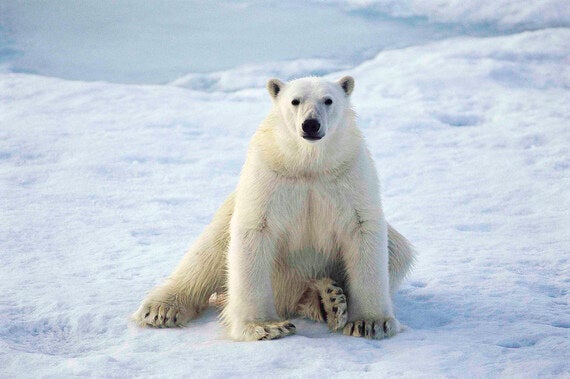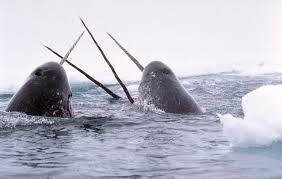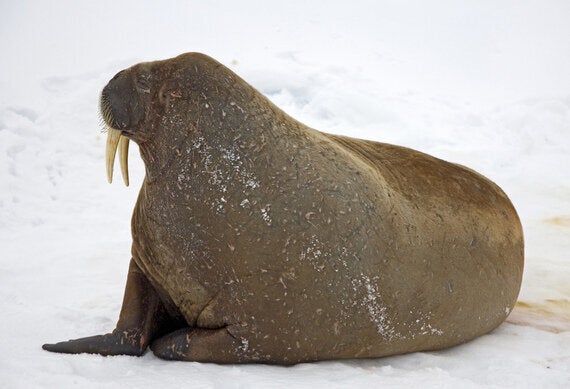The world's most desolate climate is home to animals that have adapted to take the harsh environment and thrive in it. Many of the arctic residents are a sub-species of animals that live in different places across the globe. It's fascinating to see these animals in a vast and isolated part of the world and study how this affects their lifestyle and behaviours.
The Polar Bear - Majestic, not so White and Friendly

Image Courtesy of flickrfavorites
The Polar Bear is synonymous with the Arctic Circle and has long been one of the most popular animals around the world. As a sister species of the brown bear, it shares similar characteristics with them, but it has adapted to the cold temperatures and has developed skills for moving across ice, snow and water. Their fur is actually not white, it is transparent and their skin is black underneath! Polar bears have also developed skills to hunt for seals which form the majority of their diet. It's amazing to know that these stark, white bears are related to the brown bear, you would think they were polar opposites!
The polar bear is classified as a marine animal but it is also the only living 'marine-mammal' with powerful limbs that allow them to cover large expanses on land. They're also not a territorial animal unlike grizzly bears, they have been stereotyped as aggressive but in actuality they are not adept to confrontation and instead of fighting they will leave the scene. Often adult polar bears are seen alone, but they can be very playful with each other and have even been seen developing friendships. Sometimes they sleep in an embrace on occasion, now that's friendship!
Narwhals - The Unicorns of the Sea

Image Courtesy of Wikipedia
One of the most interesting facts about the Narwhal is their protruding helical tusk, which sets the males and 15% of the females apart from the other toothed whales out there. The tusk is actually protruding from a canine tooth, which is also so sensitive it can sense changes in the atmosphere! Narwhals belong to the Monodontidae family along with the Beluga whale, which it also shares the icy arctic waters with. Narwhals can live up to 50 years, but there have been many cases where they have suffocated under sea ice freezing over. There are 75,000 thought to be out there which qualifies them as near threatened. Throughout history, Inuit's have harvested them for their meat and ivory which is very valuable.
They are social creatures like many other whales. They congregate in mixed groups of both sexes but also separate off where the bulls will engage in rubbing their tusks together which is known as 'tusking' which maintains the social dominance in their hierarchies.
Walrus - The Horse Whale

Image Courtesy of NOAA Photo Library
According to J.R.R Tolkien walrus is derived from Germanic language and has been translated into meaning 'horse whale' and considering the size a male walrus can go up to (4,400lb) they are living up to the name. The walrus skin is thick with a 15cm layer of blubber lying underneath; they are also sparsely covered in hair and appear bald. The walrus only has two natural predators; the Orca and the polar bear and due to its large size it is rarely provoked by other animals.
Its tusks are actually its two front teeth which are used to hoist itself onto land. The adorable whiskers walruses have are for searching for food at the bottom of the ocean, where they can also hold their breath for 30 minutes. Humans are no longer allowed to hunt for walruses because they are an endangered species due to constant hunting for their blubber and ivory tusks.
Arctic Fox - The Monogamous

Image Courtesy of Emma
This spectacular animal is adept at dealing with frigid temperatures and has evolved to live in these conditions. They do start to shiver if the temperature drops below -70°C, but this truly creates an understanding for the weather they can withstand. Like their name suggests they live in the arctic and arctic tundra habitats, including Europe, Northern Asia and America. During the seasonal changes, their fur also changes so they can camouflage themselves throughout the year. So during the winter their fur is fluffy, full and white and throughout the summer it is darker and not as fluffy. They have excellent senses and they can smell and hear prey that is hidden beneath the snow. They are also monogamous, and both the male and female look after the babies. Arctic foxes are very modern!
All arctic animals have something in common, they have all adapted to the harsh climates and their anatomy has become precise at protecting them from blubber insulation to tusks. It shows how the weather affects the behaviour of the animals and really impacts its life. We, as humans get to witness the difference between warm climate animals and cold climate animals and assess the fascinating differences.
By Fay Partridge
Check out 'Into the Wild' for more articles like this.
Fay Partridge is an Online Jouralism Intern for Frontier, a non-profit conservation NGO that helps people plan their gap year with over 300 opportunities to volunteer abroad and take part in adventure travel across the globe.
